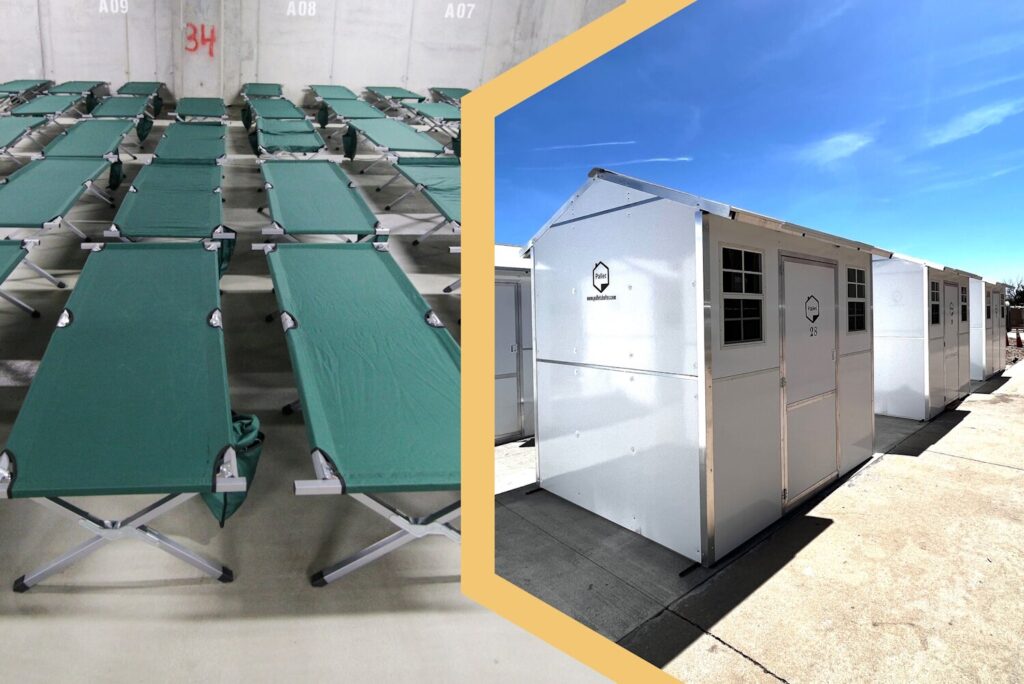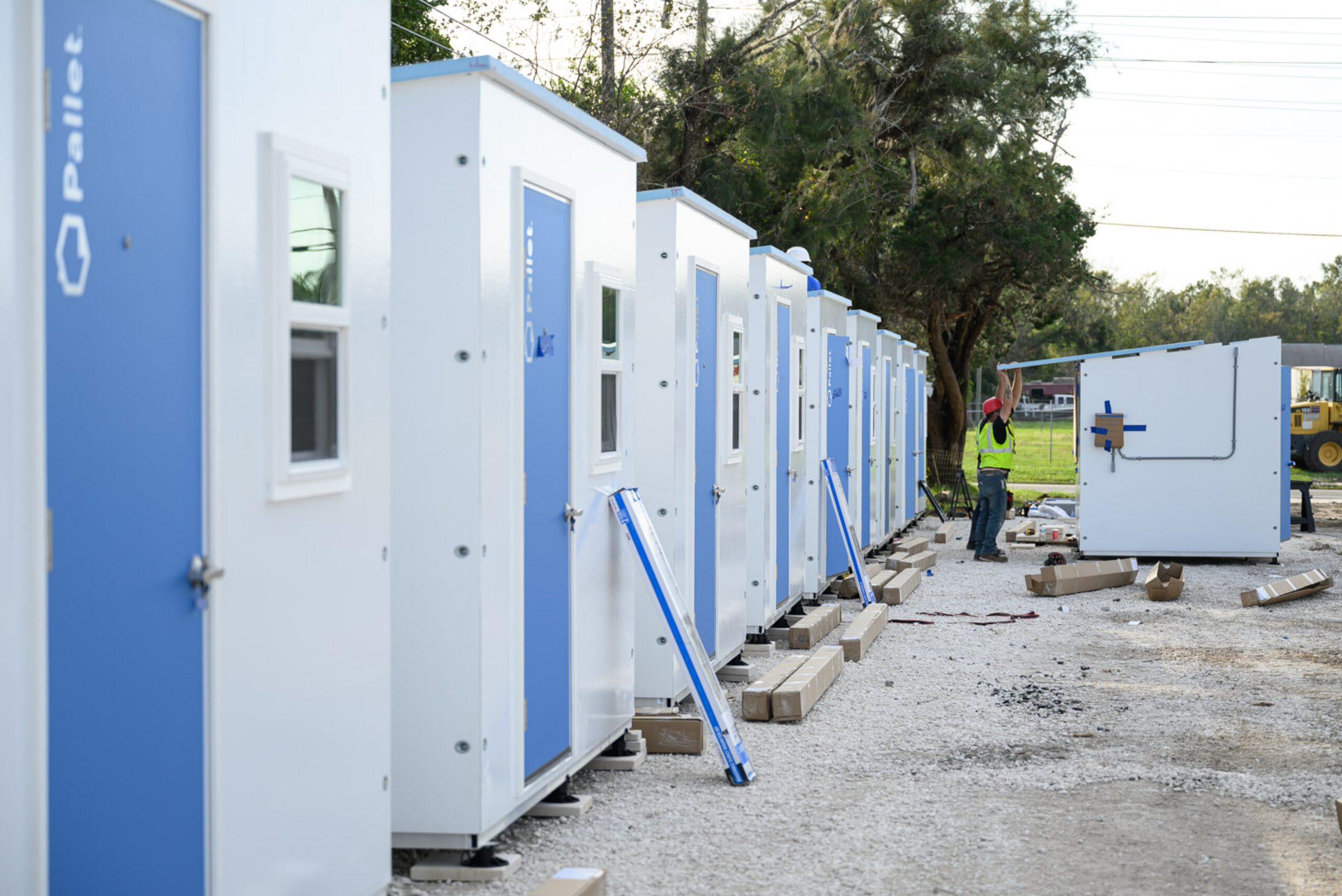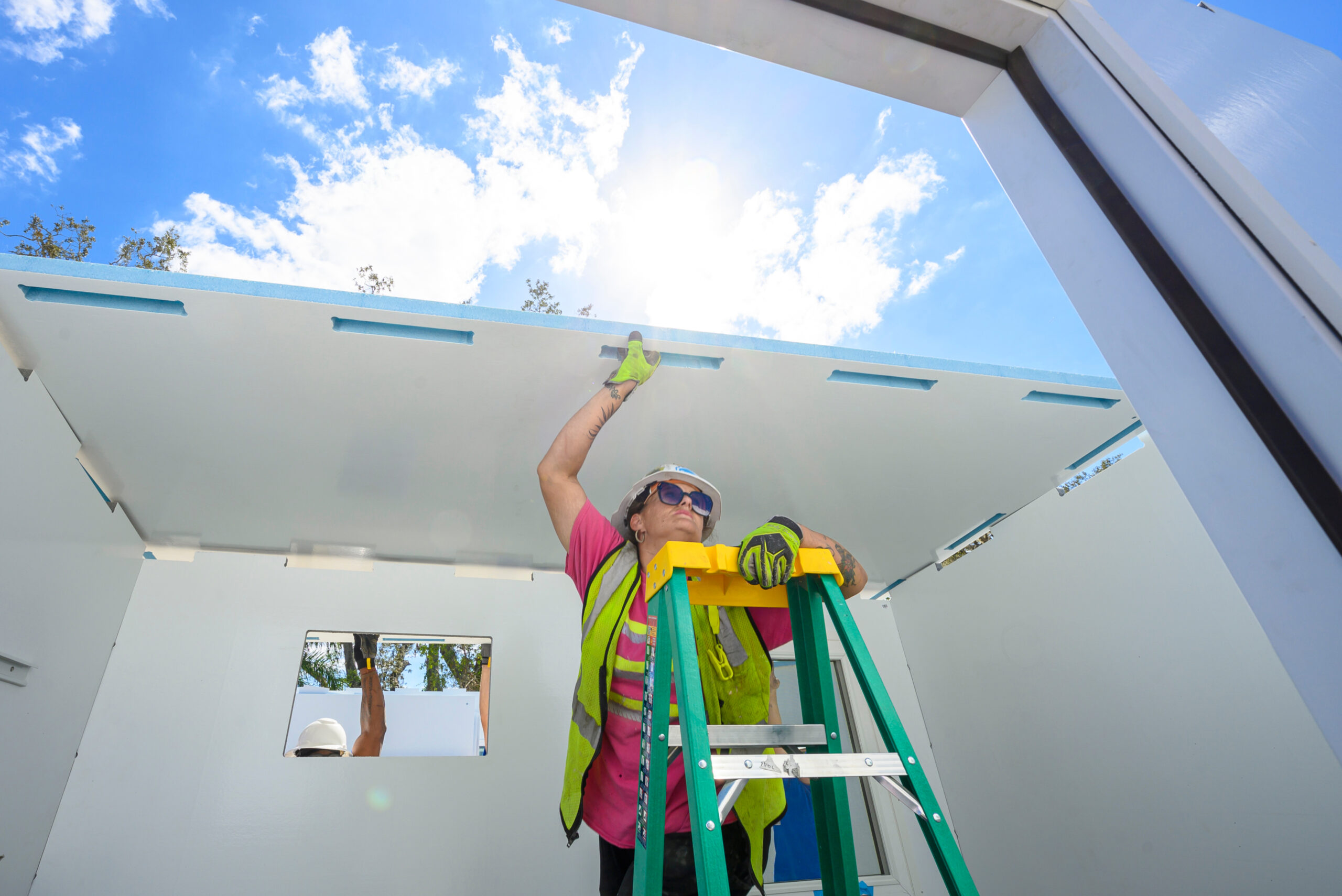Rethinking post-disaster housing solutions
July 26, 2023

By now it’s a familiar sight: cities and towns ravaged by hurricanes, tornadoes, flooding, or wildfires; homes and living spaces decimated; and people ushered into stadiums, schools, or anywhere that has the capacity for those displaced. In 2022 alone, 3.3 million Americans were displaced by disasters—and one in six people never returned to their homes.
While mass congregate shelter is often the only viable option to aid survivors directly following a natural disaster, it is not a sustainable solution for the days, weeks, or months that follow. In the variable, unpredictable period when homes, rental housing, and other living facilities are being rebuilt, there is a distinct scarcity of interim shelter options that fit the diverse needs of displaced populations.
It’s time to take a closer look at why our current system of post-disaster housing isn’t sufficient, and to provide broader, more equitable options for people displaced by natural disasters.
No solution is “one size fits all”
Before a successful post-disaster housing system can be designed, we must acknowledge the needs of those displaced are not the same for every person. Someone with a large network of family and friends able to provide temporary housing faces different challenges than someone who doesn’t have anyone to turn to in a time of stress and trauma. A homeowner with good insurance to rebuild their house would have a vastly different experience following a natural disaster compared to a renter living paycheck to paycheck.
These inequities are highlighted when living situations are uprooted. Marginalized and low-income communities are disproportionately affected by disasters. This is largely attributed to the pitfalls of affordable housing, which tends to be older, less maintained, and built in less desirable locales (such as flood-prone areas), leading to a higher likelihood of being severely damaged and taking longer to regain its value. In many cases, rental companies find it a cheaper solution to simply not rebuild when their properties are destroyed, a decision made easier when no emotional investment is involved.
Further, renters, low-income homeowners, and those with precarious housing (such as seniors living on fixed incomes) are less likely to have adequate insurance that would meaningfully contribute to a new living situation. Assistance through programs like the Community Development Block Grant Disaster Recovery can also take years to kick in, leaving many stranded without any financial support to rebuild their lives.
Even excluding the much-needed reform of long-term solutions, the current models of immediate disaster shelter have their own set of drawbacks.
Looking beyond emergency mass congregate shelter
Immediately following traumatic and destructive weather events, stadiums, schools, or other large community buildings are often the only options to provide improvised shelter for crowds of newly displaced people.
But even in a time of catastrophe, congregate shelter is not viable for many individuals and families. There are many reasons for this: people with past trauma from living with strangers, sexual abuse, or domestic violence do not feel safe sleeping in an open environment with others; those living with a sensitive medical condition can be put at risk when exposed to crowds and the potential of spreading infectious disease; and in many cases, people with pets, which provide vital emotional support, aren’t allowed to keep them in a congregate setting.
Interim shelter can lower these barriers and fill an underrepresented role in the post-disaster housing continuum. People can stay with their families and pets; they are afforded a dignified and private space to recuperate after losing their home and have access to onsite supportive services.
This model also acts as a crucial link between the hours following a disaster and the weeks or months it takes to rebuild in the aftermath. Pallet shelter villages can be rapidly deployed: within a matter of days of the panelized shelters arriving on the selected site, a village can be established with the urgency needed to aid survivors. And since shelters can be stored flat and are easily disassembled and moved, cities can stockpile shelters for even faster deployment and relief.
To meet the diverse needs of disaster survivors, it’s essential to provide a full range of shelter and housing options. It’s long overdue to examine and change our current response models—because resilient communities can only be built by creating equitable and inclusive opportunities to accommodate every individual.
With extreme weather becoming more common each season, our shelters have to readily withstand scorching and freezing temperatures, snow, rain, and strong winds. Learn more about why Burlington, VT chose Pallet to provide refuge from the bitter cold of Northeast winters for their unsheltered neighbors.


